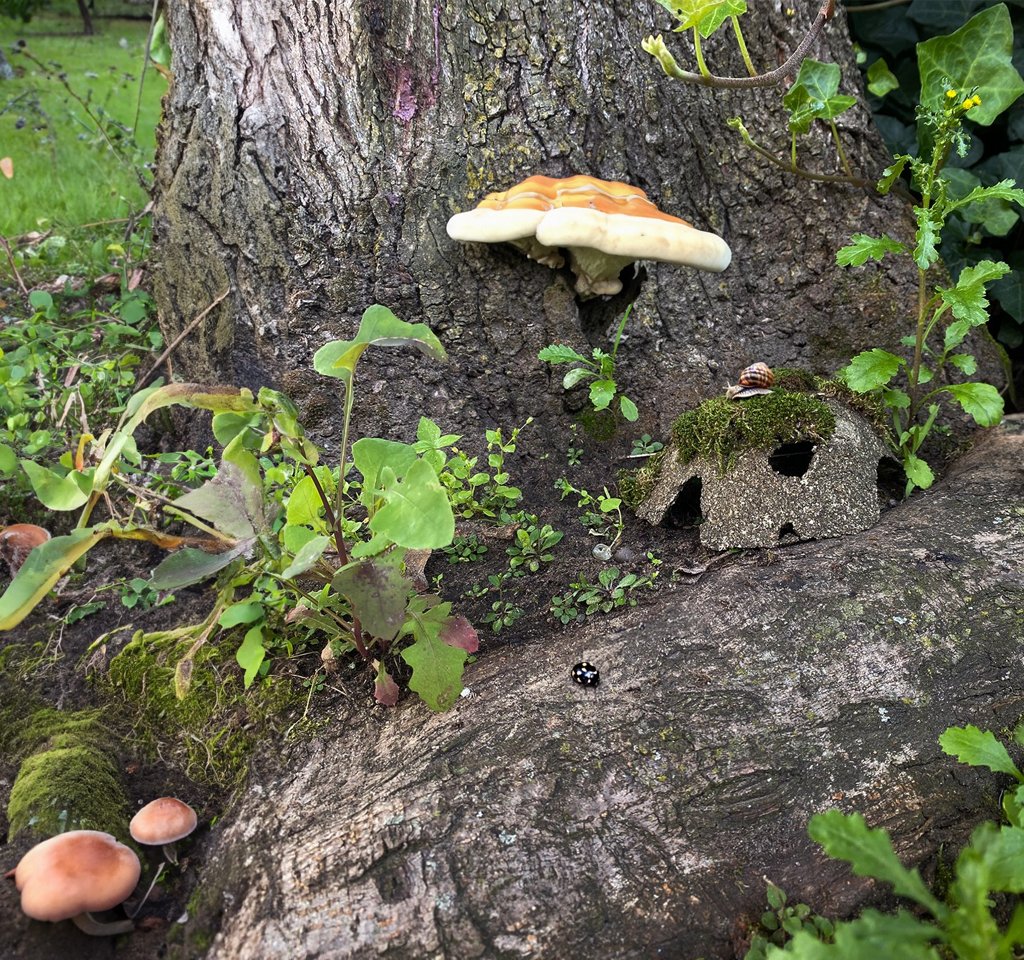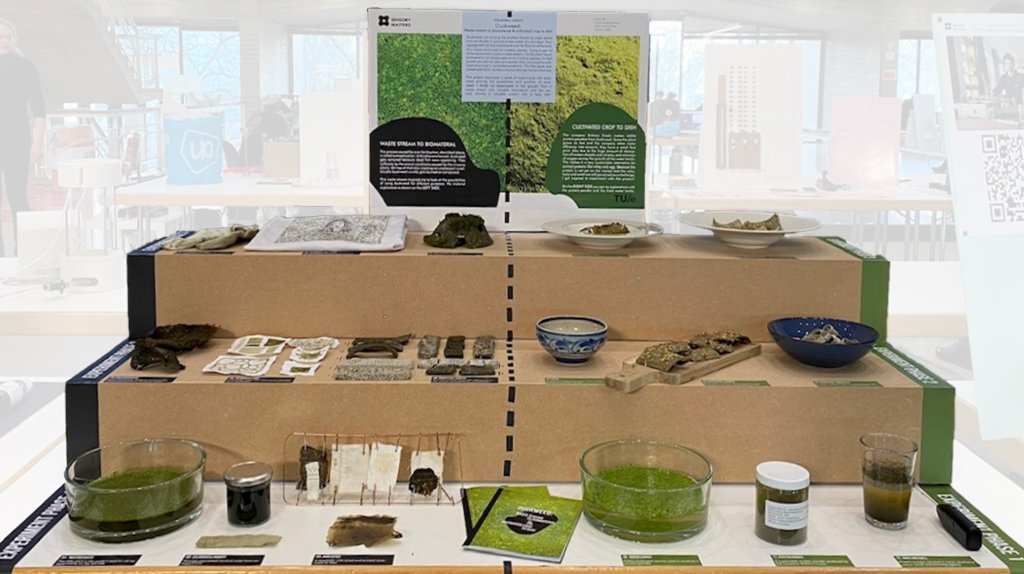Duckweed
Margot Beekhuizen
What potential does duckweed hold?

duckweed chlorophyll dye tshirt
Duckweeds can double in quantity in the matter of a few days. Their rapid growth can skyrocket due to over-fertilization of the land. It is an invasive species, killing the ecosystem it grows in and removing it creates a waste stream. On the other hand, when it is cultivated as a crop in controlled conditions, the rapid growth also shows promise. The little plant, also called water lentil, contains more protein per hectare than soy and is described to have the ‘perfect amino acid combination’ to substitute animal proteins.
The project displays different biomaterials and dishes. It researches two different sides of the fast growth of duckweed. On the one hand, duckweed is used for bioplastic, a pigment and biodegradable filler/gluing agent. On the other hand, Rubisco Food's use of duckweed in their protein powder is also researched. The possibilities of it accompanying a gluten free diet (which often lacks proteins) is investigated, alongside the currently available color, taste and smell palette. The company itself had not yet invested in applications of the powder. Thus, the possibilities were explored by making lentil pesto, gluten free crackers, pasta, and a sweet dessert.


The goal was to display the diversity of duckweed through material research, both as a biomaterial, and for everyday consumption. Duckweed as biomaterial showed promise in gluing agency, and in the isolated chlorophyll pigment. As for consuming duckweed, it can be used in both sweet and savory dishes. The most prominent taste was a fish-like taste in savory dishes, and a matcha-like taste in sweet dishes. Based on the described culinary niche and the attempts to get duckweed taste, color and smell free, there is certainly a future in duckweed for daily consumption.
Share
Contacts
- -Margot Beekhuizenm.m.c.beekhuizen@student.tue.nl
